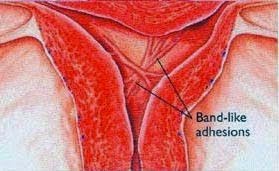What Is Asherman′s Syndrome?
What Is Asherman′s Syndrome?

Definition: A condition characterized by adhesions and/or fibrosis of the endometrium, the uterine walls adhere to one another, this is usually caused by uterine reaction to injury and infections leading to scarring of the cavity in the uterus. In severe cases the walls of the uterus stick together or the cavity completely fills up with scar tissue and becomes solid.
Causes: In most cases, Asherman’s syndrome is caused by an overly aggressive procedure called a Dilation & Curretage (D & C), which is performed following a pregnancy (post miscarriage or birth) or for evaluation of the uterus (endometrial biopsy). Asherman’s syndrome can also result from intrauterine surgery to remove fibroids, uterine structural defects (septum, bicornuate uterus, large polyps) or post cesarean section, infections related to IUD use (or the placement of any foreign object within the uterine cavity). In rare cases, other infections or radium insertion into the uterus for the treatment of gynecologic cancers can lead to Asherman’s Syndrome.
Symptoms
- No menstrual flow (amenorrhea)
- Decreased menstrual flow over time
- Infertility
- Recurrent miscarriages
- Pelvic pain
These symptoms are more likely to indicate Asherman’s syndrome if they occur suddenly or progressively after a D and C or other uterine surgery.





